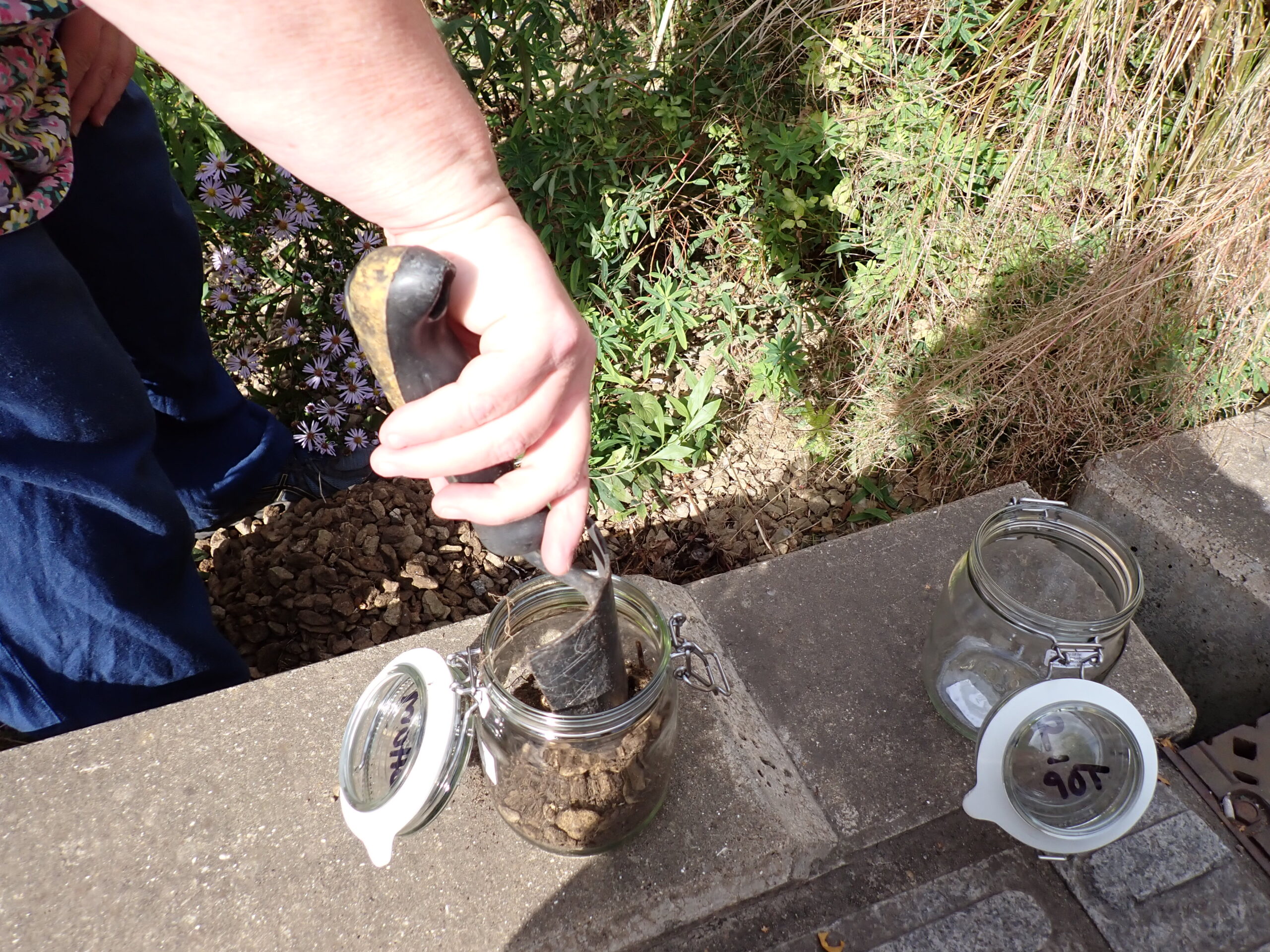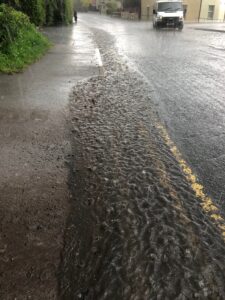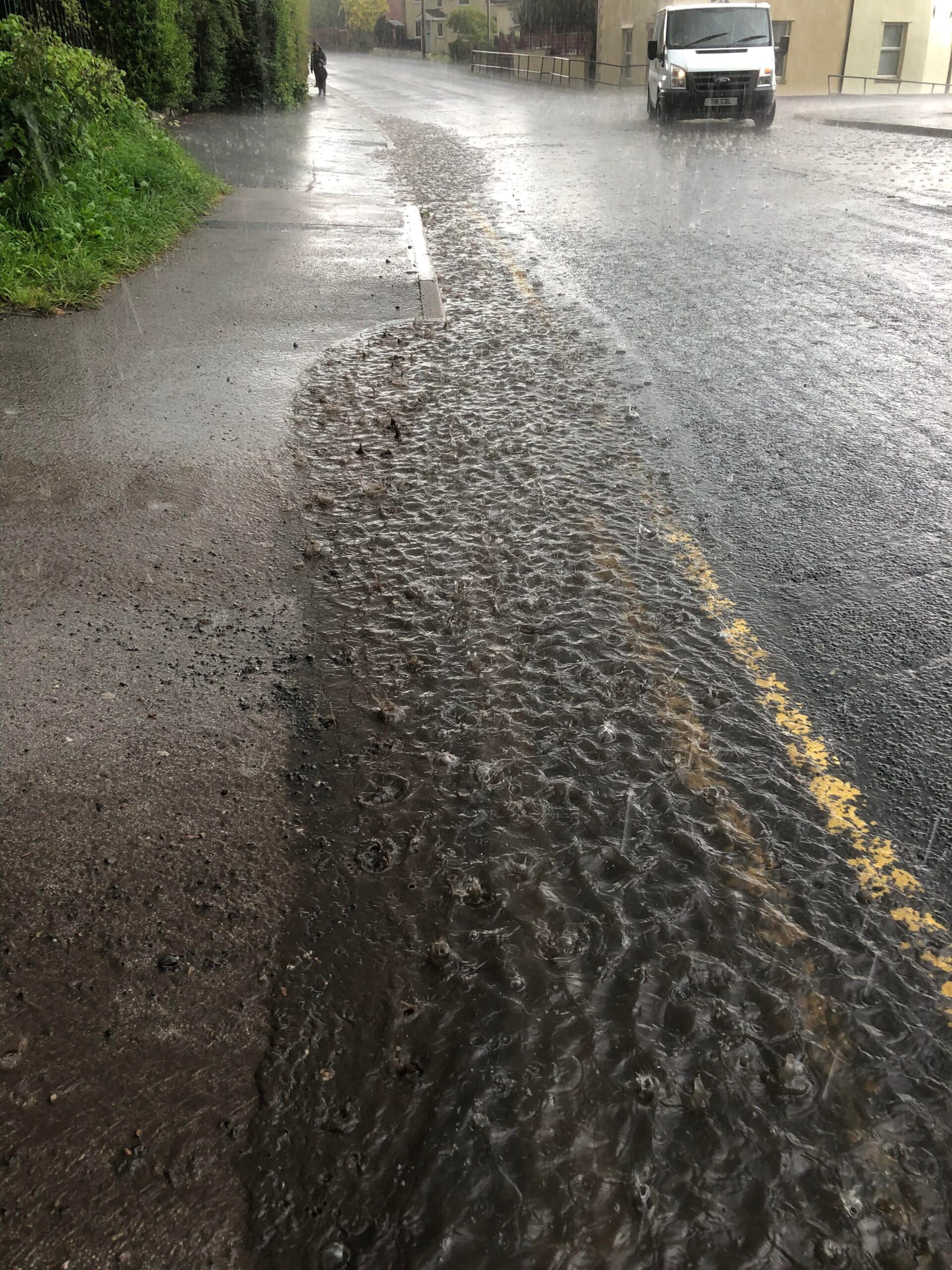This week, the Stormwater Shepherds UK team has been busy sampling sediments from different types of urban runoff treatment devices. The samples are for a University project that won’t be concluded for a year or so, but the process of taking the samples has been interesting in itself.
Some of the ponds and basins have become very densely populated with bullrushes and reeds and this made sampling quite tricky. But it was clear that these plants had created a dense and quite deep root network, and that the urban runoff was penetrating this network and being captured and treated, with time and natural processes working together. One basin on a residential development near Congleton was a delightful habitat for wildlife and a lovely place for people to spend time, enjoying the wildlife. The vegetation was busily treating the runoff and protecting the neighbouring stream and a local lady told me that the basin had only flooded once and that the levels had come nowhere close to their homes. This basin was working beautifully and was delivering all four ‘Pillars of SuDS*’ very well.

We also sampled a swale and a bioremediation zone, both treating road-runoff from urban areas. These devices were clearly contaminated near the inlet, where the road-runoff enters the device and the sediment there was black and dense. But for both these devices, the samples taken near the outlet were less black and appeared (visually) to be less contaminated. It will be fascinating to see what the results reveal.
Two of the ponds treating runoff from busy roads were less clear and the visual inspection of the samples was confusing. The samples near the inlets were visually quite clean and had little black sediment in them; one of them was very sandy. But the samples taken near the outlets were black and dense. This may be because the rate of flow through the pond is too high and the sediment in the road runoff is being ‘washed’ towards and out of the outlet, or it may be because the sediment is able to settle out better towards the outlet when the velocity of the flow is lower? It will be fascinating to see the results of analysis for these devices too.

Stormwater Shepherds UK is pleased to support research projects like this one because we are in desperate need of more data and information to inform SuDS device designs.
*The four ‘Pillars of SuDS’ are water quality, water quantity, amenity and biodiversity. SuDS are Sustainable Drainage Systems that mimic natural drainage systems as much as possible. Water quality management reduces pollution; water quantity management reduces the risk of flooding; amenity management creates pleasing places for people to spend time near nature, and biodiversity management creates habitats for wildlife to thrive in.







